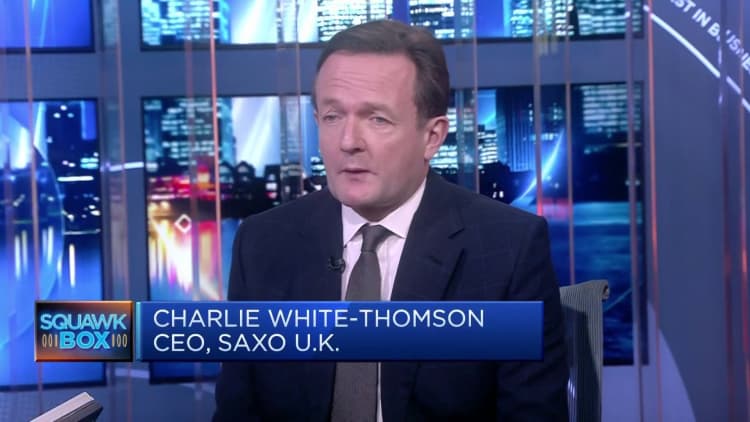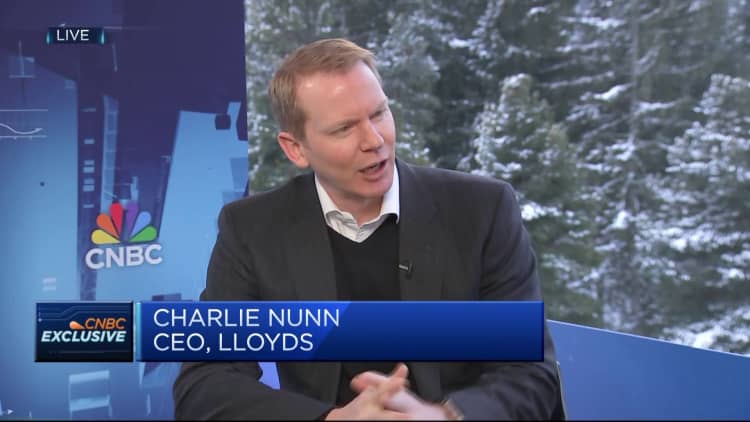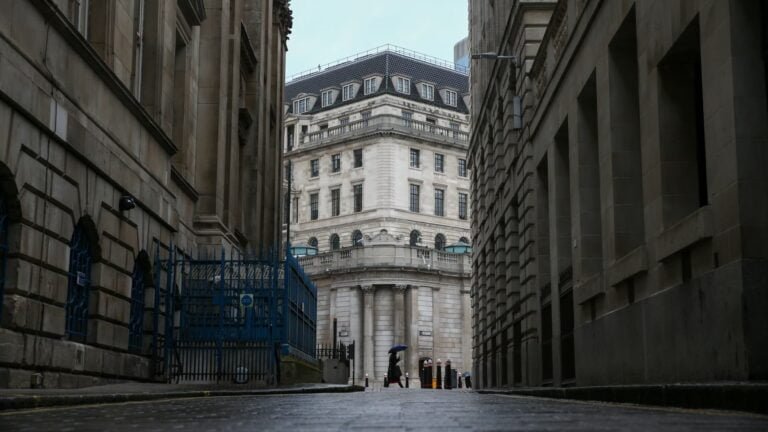A walkway near the Bank of England (BOE) in the City of London, UK, on Thursday, March 18, 2021.
Hollie Adams | Bloomberg | Getty Images
LONDON – The Bank of England on Thursday raised interest rates by 50 basis points and dialed back some of its previous gloomy economic forecasts.
The Monetary Policy Committee voted 7-2 in favor of a second consecutive half-point rate hike, taking the main Bank rate to 4%, but indicated in its decision statement that the small increases and the final Ending the hiking cycle may be on the cards at future meetings. The two opposing members voted to leave the rates unchanged at this meeting.
Crucially, the Bank also dropped the word “force” from the rhetoric about continuing to raise rates as needed to curb inflation. It sees an upcoming easing in the annual Consumer Price Index:
“Annual CPI inflation is expected to fall to around 4% by the end of the year, along with a shallower projected decline in output than forecast in the November Report,” the Bank said.
“In the latest modal forecast, conditioned on a market-implied path for the Bank Rate to rise to around 4½% by mid-2023 and return to above 3¼% in three years’ time , an increase in the level of economic slack, along with the fall. external pressures, leading the CPI inflation to decrease below the 2% target in the medium term.”
However, the MPC noted that the labor market remains tight and domestic price and wage pressures are stronger than expected, suggesting risks of “more persistence in underlying inflation.”
UK inflation came in at 10.7% in December, slightly below last month’s 41-year high of 11.1% as easing fuel prices helped ease price pressures. However, high food and energy prices continue to squeeze UK households and prompt widespread industrial action across the country.
Emerging economic outlook
The Bank on Thursday revised its economic outlook to predict a shorter and shallower recession than previously set in November projections.
The economy is now expected to contract slightly throughout 2023 and the first quarter of 2024 as energy prices remain high and rising market interest rates hold back spending. Four-quarter GDP is expected to fall by 0.3% through the first quarter of 2023, and is expected to contract by 0.7% in the first quarter of 2024, compared to the 2% forecast in November.
The Bank had previously forecast that the UK economy was entering its longest recession on record, but GDP unexpectedly grew by 0.1% in November after also beating expectations in October, suggesting the looming recession could be not as long or as deep as previously feared.
However, the International Monetary Fund on Monday downgraded its projection for UK GDP growth in 2023 to -0.6%, making it the worst performing major economy in the world, behind Russia.

Rates near a peak
Sterling fell 0.7% against the dollar, and gilt yields fell, as the central bank signaled that prices were approaching a peak, while leaving the door open for more tightening if needed.
“With the softening of the labor market and inflation beyond its peak, there seems to be no good reason to tighten rate policy further, and do not forget that quantitative tightening is still going on in the background,” said Boris Glass, senior economist at S&P Global Ratings.
“The BoE went from almost zero to 4% in quick succession. These higher rates have yet to show their full impact on the economy and, in particular, inflation.”
Glass also flagged the potential impact on the housing market, with British mortgage holders now facing the “double squeeze” of high inflation and higher mortgage costs. S&P Global believes the Bank will now stop monitoring the effects of its tightening so far on inflation and the wider economy.

“Wages inflation is stubborn, even behind inflation, but it is what makes higher inflation likely to remain in the future, and that is a key concern of the BoE, so it will be keeping a close eye on labor market and will pay for growth in the next few months,” added Glass.
Hussain Mehdi, macro and investment strategist at HSBC Global Asset Management, also suggested that the main Bank rate is now “close to its peak,” with the growth outlook “still soggy” despite the upward forecast revision.
“The big question now is the speed at which the MPC can reverse course on rates. A downside risk for markets and the economy is a long period of tight policy to deal with persistent underlying inflation,” said Mehdi.
“We maintain a cautious view on UK and European stocks in the face of risks of falling GDP and corporate earnings growth relative to consensus expectations, and believe that the new that rally is unsustainable.”
